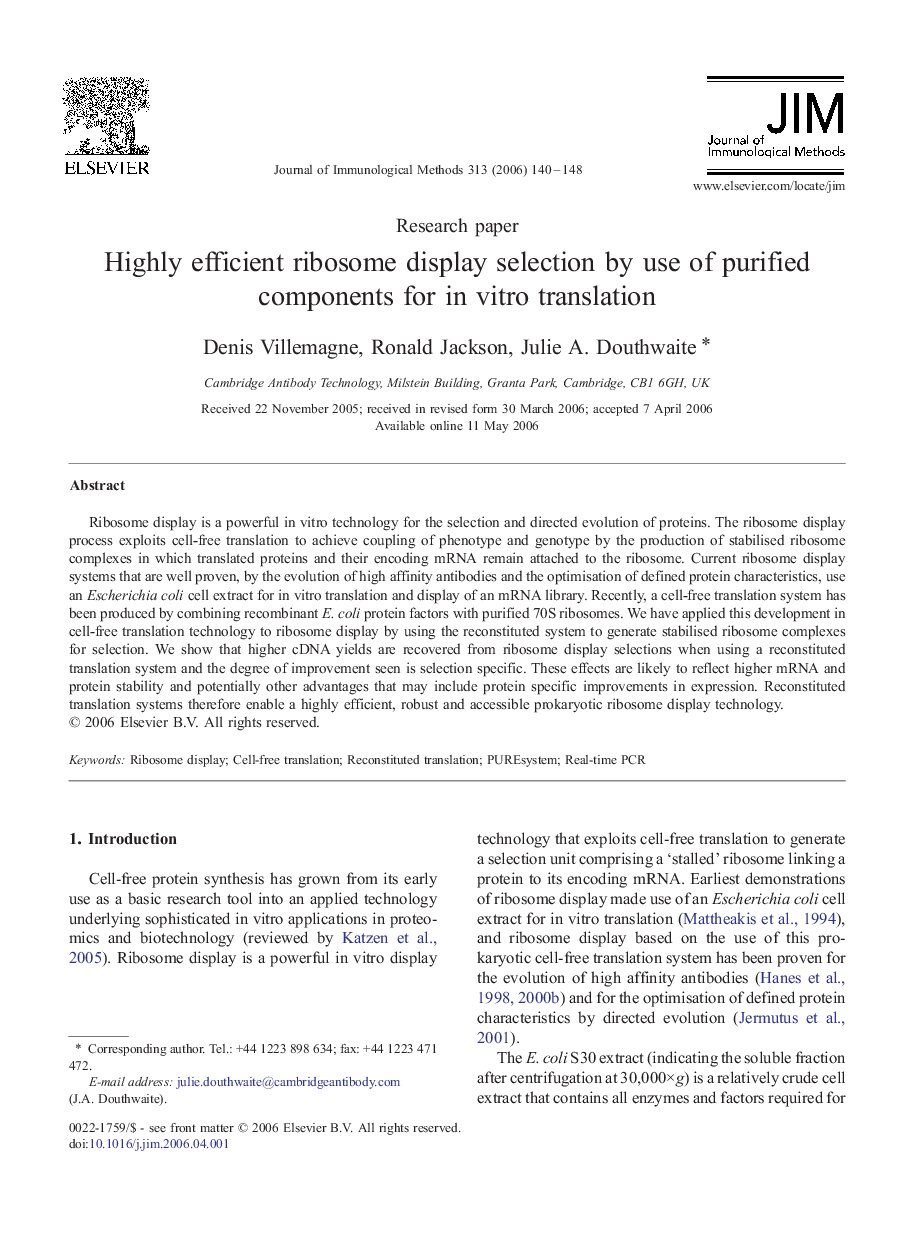| Article ID | Journal | Published Year | Pages | File Type |
|---|---|---|---|---|
| 2089353 | Journal of Immunological Methods | 2006 | 9 Pages |
Ribosome display is a powerful in vitro technology for the selection and directed evolution of proteins. The ribosome display process exploits cell-free translation to achieve coupling of phenotype and genotype by the production of stabilised ribosome complexes in which translated proteins and their encoding mRNA remain attached to the ribosome. Current ribosome display systems that are well proven, by the evolution of high affinity antibodies and the optimisation of defined protein characteristics, use an Escherichia coli cell extract for in vitro translation and display of an mRNA library. Recently, a cell-free translation system has been produced by combining recombinant E. coli protein factors with purified 70S ribosomes. We have applied this development in cell-free translation technology to ribosome display by using the reconstituted system to generate stabilised ribosome complexes for selection. We show that higher cDNA yields are recovered from ribosome display selections when using a reconstituted translation system and the degree of improvement seen is selection specific. These effects are likely to reflect higher mRNA and protein stability and potentially other advantages that may include protein specific improvements in expression. Reconstituted translation systems therefore enable a highly efficient, robust and accessible prokaryotic ribosome display technology.
